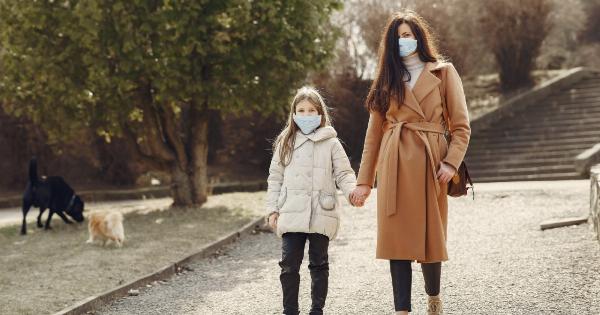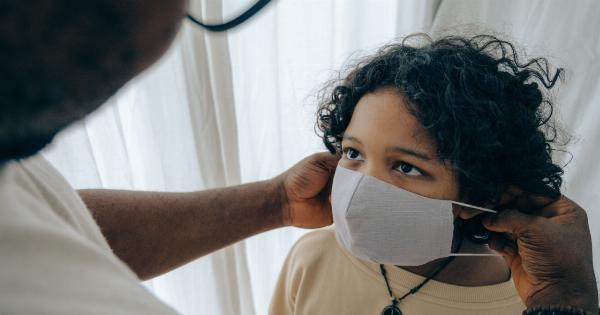Asthma is a chronic respiratory condition that affects people of all ages, including children. As a parent, it’s important to be aware of the common signs and symptoms of asthma in order to seek appropriate medical help for your child.
This article aims to provide you with a comprehensive guide on recognizing asthma symptoms in your child, so you can take prompt action and ensure their well-being.
What is Asthma?
Asthma is a long-term inflammatory condition of the airways that results in narrowing and swelling of the air passages. This can lead to symptoms such as wheezing, breathlessness, coughing, and chest tightness.
In children, asthma symptoms may vary in frequency and severity, but it’s crucial not to ignore any potential signs as early intervention can make a significant difference in managing the condition.
Common Asthma Symptoms in Children
1. Wheezing:.
One of the most common symptoms of asthma in children is wheezing, which is a high-pitched whistling sound produced when air flows through narrowed air passages.
Wheezing is often more noticeable during expiration and can be heard even without the help of a stethoscope.
2. Shortness of Breath:.
Children with asthma may experience shortness of breath, particularly during physical activities or episodes of coughing. They may also complain of feeling tightness or heaviness in their chest.
3. Chronic Cough:.
A persistent cough that lingers for weeks or months can be a sign of asthma. The cough may be worse at night or early in the morning, disrupting your child’s sleep.
4. Chest Tightness:.
Children with asthma may describe a sensation of tightness in their chest, as if someone is squeezing or sitting on their chest. This symptom may be accompanied by difficulty in taking deep breaths.
5. Fatigue:.
Asthma can cause tiredness and fatigue in children due to the extra effort required to breathe. If your child appears to be unusually tired or lacks energy, it’s worth investigating the possibility of asthma.
6. Rapid Breathing:.
Children with asthma may exhibit rapid breathing or breathing that appears labored. This can be a noticeable change in their normal breathing pattern.
7. Difficulty Sleeping:.
Uncontrolled asthma symptoms can disrupt your child’s sleep, leading to frequent awakenings during the night and daytime drowsiness. Observe if your child appears restless or struggles to fall asleep due to coughing or wheezing.
8. Allergies and Hay Fever Symptoms:.
Children with asthma are often more susceptible to allergies and hay fever. If your child frequently experiences symptoms like a runny nose, sneezing, or itchy eyes alongside respiratory issues, it could be indicative of underlying asthma.
9. Recurrent Chest Infections:.
Children with asthma may be prone to recurrent chest infections or bronchitis. If your child frequently develops respiratory infections, it’s essential to evaluate if asthma could be contributing to their susceptibility.
10. Emotional Changes:.
Untreated asthma can have a significant impact on a child’s emotional well-being. They may become irritable, moody, or exhibit changes in behavior.
If you notice such changes alongside respiratory symptoms, addressing asthma as a potential cause is crucial.
When to Seek Medical Help
If you observe any of the above symptoms in your child, it’s essential to consult a healthcare professional for a proper diagnosis. Early intervention and treatment can help manage asthma effectively and improve your child’s quality of life.
Additionally, it’s crucial to seek immediate medical attention if your child has rapid or labored breathing, severe wheezing, or if their lips and face turn bluish – these may indicate a severe asthma attack.
Diagnosing Asthma in Children
Diagnosing asthma in children typically involves a combination of medical history evaluation, physical examination, and breathing tests.
The doctor may inquire about your child’s symptoms, including their frequency, triggers, and family history of asthma or allergies. They may also perform a lung function test, such as spirometry, to assess your child’s breathing capacity and airflow.
In some cases, additional tests like chest X-rays or allergy tests may be recommended to rule out other conditions and identify specific triggers.
It’s important to cooperate with the healthcare professional and provide accurate information to ensure an accurate diagnosis.
Managing Asthma in Children
While asthma is a chronic condition, effective management strategies can help control symptoms and allow your child to lead a fulfilling and active life. Here are some essential steps in managing asthma in children:.
1. Create an Asthma Action Plan:.
Work closely with your child’s doctor to develop a personalized asthma action plan. This plan should outline the necessary steps to control asthma, including daily medications, recognizing early symptoms, and managing asthma attacks.
2. Identify and Avoid Triggers:.
Help your child identify and avoid triggers that worsen their asthma symptoms. Common triggers include allergens like pollen, dust mites, pet dander, or certain foods.
By minimizing exposure to triggers, you can reduce the frequency and severity of asthma episodes.
3. Take Medications as Prescribed:.
Ensure your child takes their prescribed asthma medications as directed by their doctor. This may include daily controller medications to manage inflammation and bronchodilators for immediate relief during asthma attacks.
4. Regular Follow-ups:.
Regular check-ups with your child’s healthcare provider are crucial to monitor asthma control and make any necessary adjustments to the treatment plan.
These follow-ups also provide an opportunity to address concerns or questions you may have regarding your child’s asthma management.
5. Educate Your Child:.
As your child grows older, teach them about their asthma and how to manage it independently. Educating them about triggers, medications, and self-care will empower them to take responsibility for their own health.
Conclusion
By recognizing and understanding the symptoms of asthma in your child, you can take proactive measures to seek appropriate medical help and ensure their well-being.
Remember, each child’s asthma experience may be unique, so maintaining open communication with your child’s healthcare provider is crucial in developing an effective management plan. With proper medical care, support, and a well-informed approach, your child can lead a healthy and active life despite having asthma.




























